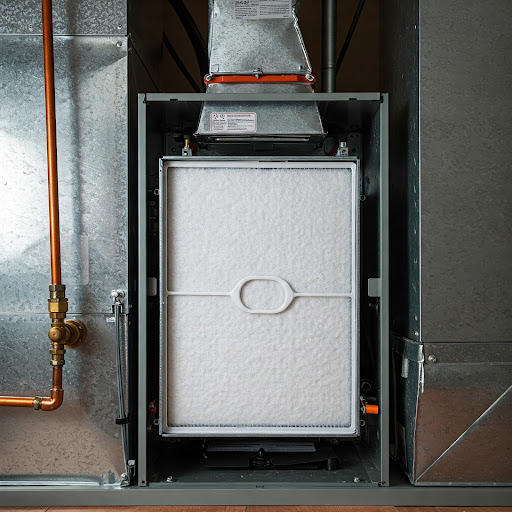
What Is a MERV Rating on a Furnace Filter?
Furnace filters help remove airborne particles and contaminants, improving indoor air quality and energy efficiency. Regularly changing your filters—typically once a month—ensures your furnace operates efficiently and reduces dust and allergens in your home. If you have children, pets, or allergies, selecting the right filter with an appropriate MERV rating is essential. Your furnace manufacturer or an HVAC professional can help determine the best option for your needs.What Is a MERV Rating?
MERV, or Minimum Efficiency Reporting Value, is a standardized rating system that measures how effectively a furnace filter captures airborne particles. Developed by the American Society of Heating, Refrigerating, and Air-Conditioning Engineers (ASHRAE), the scale ranges from 1 to 20. The higher the MERV rating, the more efficient the filter is at trapping small particles, leading to improved indoor air quality.MERV Rating Breakdown
MERV 1-4: Basic Residential Filters
- Commonly used in residential homes and window air-conditioning units.
- Captures large particles like pollen, dust mites, house dust, carpet fibres, and textile fibres.
- Disposable and electrostatic filters fall into this category.
- Regular replacement and annual furnace maintenance help maintain air quality.
MERV 5-8: Enhanced Residential & Commercial Filters
- Found in homes, commercial properties, and industrial workplaces.
- Capable of capturing pet dander, mould spores, hair spray, cement dust, and fabric protectors.
- Pleated, cartridge, and electrostatic filters fall within this range.
- Should be checked more frequently in high-traffic or pet-friendly households.
MERV 9-12: High-Efficiency Residential & Commercial Filters
- Used in newer homes, high-end commercial properties, and medical laboratories.
- Captures Legionella bacteria, humidifier dust, lead dust, auto emissions, and welding fumes.
- Commonly pleated or cartridge-style filters.
- Beneficial for individuals with respiratory conditions or high indoor pollution exposure.
MERV 13-16: Hospital-Grade & Advanced Filtration
- Found in surgical rooms, hospital care units, and areas where air purity is critical.
- Captures most bacteria, sneeze droplets, insecticide dust, tobacco smoke, and fine particulate matter.
- Typically box or bag-style filters.
- Ideal for environments requiring superior air quality control.
MERV 17-20: HEPA & Ultra-High Efficiency Filters
- Includes HEPA filters and specialized industrial-grade filters.
- Used in pharmaceutical facilities, cleanrooms, and areas handling radioactive materials.
- Captures combustion smoke, carbon dust, and viruses.
- Although highly efficient, they require frequent replacement depending on contaminant exposure.
What Is a HEPA Filter?
HEPA (High-Efficiency Particulate Air) filters are the gold standard for air filtration. They remove airborne particles that can trigger allergies, asthma, and other respiratory conditions. Originally designed for medical and industrial applications, HEPA filters are now available for residential use, providing exceptional air quality improvements.Choosing the Right MERV Rating for Your Home
Selecting the right furnace filter depends on your household’s needs:- For basic dust control: MERV 1-4 is sufficient.
- For pet owners or allergy sufferers: MERV 5-8 provides enhanced filtration.
- For improved air quality and respiratory concerns: MERV 9-12 is ideal.
- For medical or high-sensitivity environments: MERV 13+ or HEPA filters offer superior protection.
BC-Specific HVAC Considerations
- Energy Efficiency Rebates: In British Columbia, homeowners may qualify for rebates when upgrading to high-efficiency furnace filters and HVAC systems (Better Homes BC).
- Air Quality Regulations: The BC government promotes improved indoor air quality through building codes and efficiency standards for HVAC systems (BC Building Code).
- Environmental Considerations: High-MERV filters may reduce HVAC efficiency if not maintained properly. Regularly replacing filters ensures optimal airflow and system longevity.